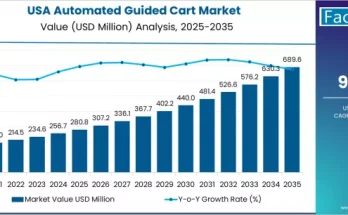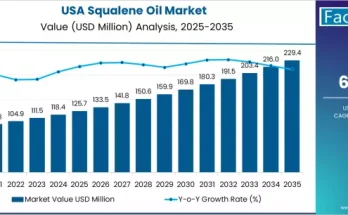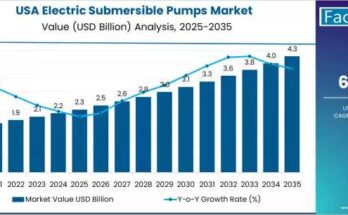The global bale stacker market is estimated to be worth around USD 182.28 million in 2023, and is forecast to expand to USD 291.95 million by 2033, growing at a compound annual growth rate (CAGR) of 4.8% over the decade. This growth is driven by increasing adoption of bale handling equipment in dairy, livestock and forage farming operations, where efficient stacking and handling of hay or silage bales can reduce feed spoilage and help preserve nutritional value.
Key Growth Drivers & Market Catalysts
Farmers and agricultural operators are increasingly using bale stackers to minimize dry matter loss, maintain bale quality (especially high-moisture bales), and streamline feed storage. By mechanizing the process of gathering, stacking, and transporting bales, farms can reduce manual labor, speed up operations, and better preserve feed for livestock. The push for improved feed management in dairy and livestock farms is supporting stronger demand.
Mechanization and automation in agriculture are accelerating as farms scale up operations, adopt modern equipment, and seek more efficient solutions. Bale stackers are becoming essential parts of bale handling suites, helping in stacking round or square bales in field or storage yards. This trend is reinforced by increasing mechanization of smaller farms, especially where manual bale handling is labor intensive or inefficient.
Click Here for Sample Report Before Buying: https://www.factmr.com/connectus/sample?flag=S&rep_id=8599
Product & Application Segmentation
Bale stackers are offered in various configurations, such as rear-mounted, front-mounted, trailer-mounted, or stationary stackers. They are built to handle different bale shapes — round bales, square bales or universal bale sizes. Operators choose stackers based on farm layout, tractor compatibility, bale type, and load requirements.
High capacity stackers capable of handling large bales (e.g. 501-1000 kg or more) are gaining traction as farms adopt larger bale sizes to improve efficiency. Stackers are used in forage farms, dairy farms, livestock feeding operations and contract bale handling or leasing operations.
Regional Insights & Growth Opportunities
In North America, adoption is strong as farms increasingly mechanize bale handling operations and look for labor-saving equipment to handle large forage operations. The region has established dairy and livestock farming infrastructure and demand for advanced bale handling equipment is rising.
Europe is also a significant market, with many farms especially in countries with large livestock operations or dairy industries adopting mechanized bale handling to meet feed storage requirements, reduce waste, and comply with feed quality standards.
The Asia-Pacific region is an emerging opportunity as many smaller and medium farms seek mechanized bale handling equipment. Growing livestock production, dairy farming, and mechanization efforts in countries with intensive forage production are driving demand for bale stackers adapted to local bale sizes and feed operations.
Competitive Landscape & Strategic Trends
Manufacturers of agricultural machinery and bale handling equipment are offering bale stackers as part of their product line, often bundling them with bale loaders, wrappers or transport trailers. Suppliers are focusing on product design that supports different bale shapes, weight capacities and mounting options.
Some companies are innovating stacker design to improve durability, ease of mounting on tractors or trailers, hydraulic controls, safety systems, and compatibility with bale wrapper or bale grab attachments. Customization features that match specific bale weights and farm size are also in demand.
Challenges & Market Restraints
Adoption is sometimes constrained by lack of awareness among smaller farms about the benefits of bale stackers, or limited capital budgets. In parts of the world, manual or less mechanized bale handling remains prevalent. Smaller farms may not fully perceive the return on investment from mechanized stackers.
Feed bale sizes vary across regions; a stacker not suited to local bale dimensions or bale weights may underperform. Customization and adaptation to regional bale standards is necessary. Maintenance, initial cost of equipment, and tractor or mounting compatibility also require consideration by farm operators.
Forecast & Strategic Recommendations for Buyers
With the market forecast to grow to about USD 291.95 million by 2033 from a base of USD 182.28 million in 2023 (CAGR ~4.8%), the bale stacker market presents solid growth opportunities. Equipment manufacturers should develop stackers tailored for local bale sizes, appropriate load capacities, and multiple mounting options to appeal to both large and small farms.
Dealers and distributors can focus on educating small and medium farmers on the efficiency and feed preservation advantages of mechanized bale stackers. Offering demo models or leasing options may help reduce adoption barriers.
Browse Full Report: https://www.factmr.com/report/bale-stacker-market
Call to Action: Why Buy the Report
This market research report provides comprehensive data on market size, segmentation by bale shape, mounting type, capacity, geographic region, and adoption across farms. Buyers will gain insights into competitive landscape, market forecasts, regional demand trends, and key growth drivers.
For manufacturers, farm machinery suppliers, investors, or agricultural equipment dealers, acquiring this report will help in strategic product planning, market entry, or expansion. The forecast and competitive intelligence can guide investment decisions or partnerships in a market that is projected to reach nearly USD 291.95 million by 2033.



